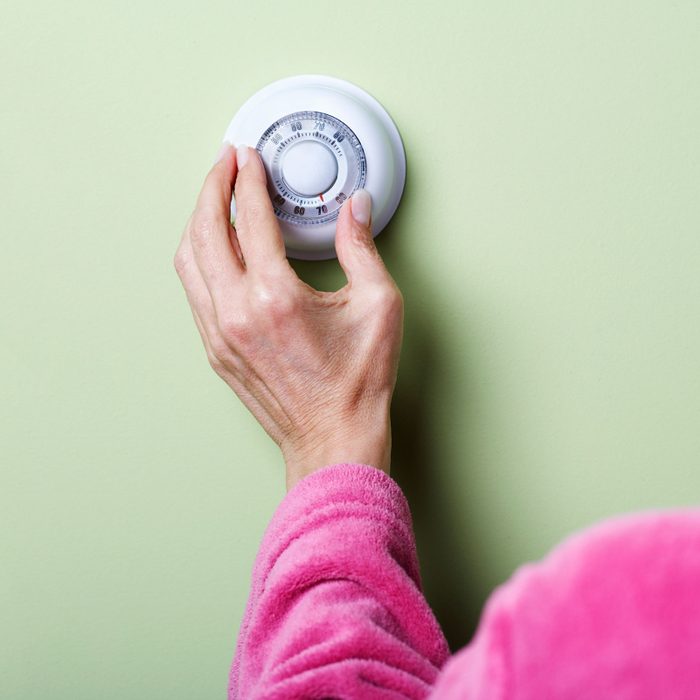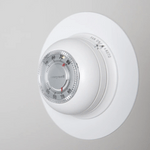6 Things To Know Before You Upgrade Your Thermostat

Modern thermostats offer more functions than older ones. You can often swap a new one for an old one, but it depends on your HVAC system.
Our editors and experts handpick every product we feature. We may earn a commission from your purchases.
Back in the days when TVs were new and not everyone had one, homes were often heated by a single furnace or electric heater controlled by a wall-mount mechanical thermostat. These thermostats are still available and perform their task reasonably well.
Today, however, modern digital thermostats leave those old devices in the dust.
Not all digital thermostats are programmable, but those that are can automatically adjust the temperature at different times of the day, which conserves energy.
Smart thermostats can predict the weather and set the temperature accordingly. They also communicate wirelessly with your mobile device and can learn your behavior patterns to better serve your needs. Even non-programmable digital thermostats feature more accurate sensors and provide better temperature control than their analog counterparts.
If you live in an older house with a mechanical thermostat or an early non-programmable digital model, you might think you need to upgrade your heating/cooling system before you can install a new thermostat. That isn’t necessarily true. With some exceptions, a new digital thermostat can easily take the place of your old one, but whether you’ll benefit from its added functionality depends on your HVAC system.
Here are some things to think about before deciding to upgrade:
On This Page
Two Wires May Not Be Enough
A 24-volt mechanical thermostat generally accepts only two wires, an incoming hot wire from the transformer (usually red) and an outgoing load wire (usually white). Many programmable and smart thermostats need a third wire — called the common, or C wire — to supply power for their various functions.
If you don’t see this third wire sticking out of the wall when you remove your old thermostat, you’ll need to install one (usually a job for a professional) or buy a battery-powered thermostat.
You May Have a Line-Voltage Thermostat
If your house has baseboard heaters and there’s a thermostat in every room, you have line-voltage thermostats. These are wired to the building’s electrical system and operate at 120 or 240 volts.
You can still replace them with digital thermostats, even smart ones like the Mysa Smart Thermostat. But you don’t have as many options as you would with low-voltage thermostats.
You Need Enough Terminals for Your System
An HVAC system upgrade usually includes a new thermostat. When choosing one, ensure it has enough terminal connections for any new equipment you may be adding, like a heat pump or dehumidifier.
Most digital thermostats come with least four terminals, labelled R (for the power input), G (to control the blower), W (to control the heat) and Y (for the air conditioner). If the thermostat doesn’t have a battery, there’s also a common terminal, labeled C.
Depending on what type of new equipment you install, you may also need the following terminals:
- O/B: These stand for orange and blue, the standard wire colors for controlling a heat pump reversing valve.
- W2: If you upgrade to two-stage heating, you need this terminal to control the second stage.
- Y2: This is for the wire that controls second-stage cooling.
- X or AUX: If your new heat pump features an auxiliary heater for extra-cold days, this terminal controls it.
- E: This activates emergency heat in case of heat pump failure.
- ACC: This controls a humidifier or dehumidifier.
- S, S1, S2: These connect to outdoor sensors. Some smart thermostats use the data to automatically adjust indoor climate to outdoor conditions.
You Can Probably DIY the Exchange
It’s always important to turn off the power to the HVAC system before working on the thermostat. If it’s a low-voltage thermostat for a central air system, you won’t get a serious shock if you forget.
Because thermostat wiring is color-coded and intuitive, the job can be DIY-able. Line-voltage thermostats operate at a higher voltage and can deliver a shock, but you’ll still be safe if you follow common safety procedures for any home electrical wiring, like checking wires with a voltage tester before you touch them.
You May Need to Move Your Thermostat
Sometimes the thermostat itself isn’t a problem, but the location is. Perhaps it was installed in the kitchen to make it more convenient. If so, someone cooking may turn down the heat and make every other room in the house too cold.
On the other hand, the thermostat may be near a drafty door or window. Turning up the heat there then bakes everyone in the house. Relocating a thermostat to a hallway or living room means running new wires, which should be handled by an HVAC pro.
Choose a Temperate Day
According to Murphy’s Law, anything that can go wrong will go wrong at the worst possible time. You don’t want that to happen when it’s extremely hot or cold outside.
Minimize the impact of unforeseen circumstances by doing the exchange in temperate weather, when a temporarily non-functioning HVAC system isn’t comfort-critical.



